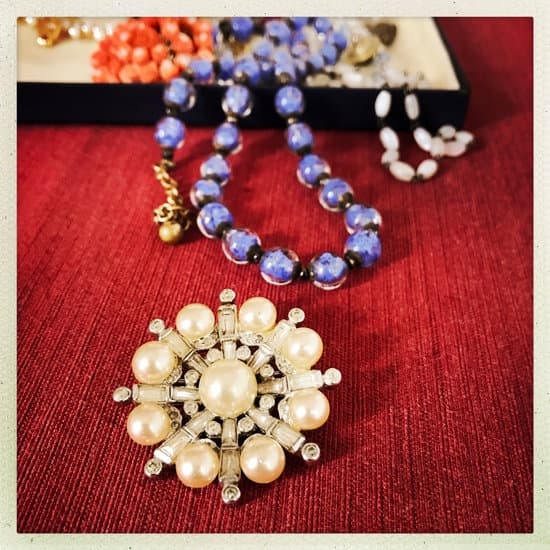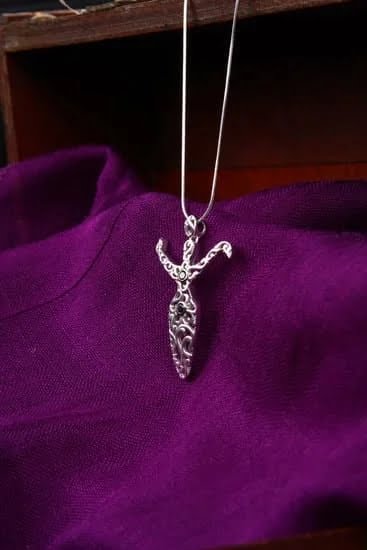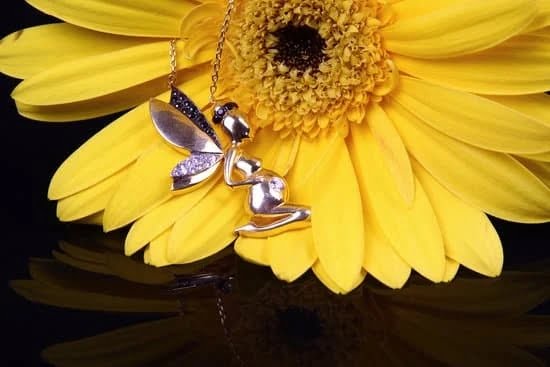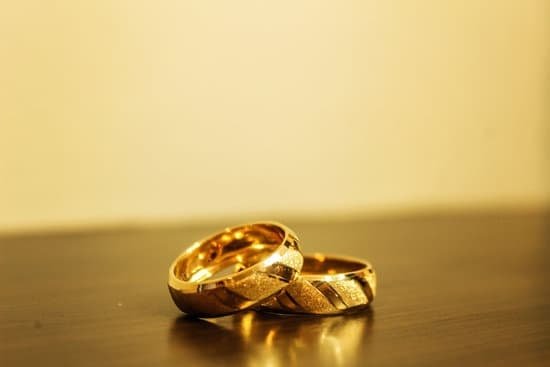Tarnish can dull the shine of fine jewelry, leaving it looking lackluster and less appealing. Knowing how to remove tarnish from fine jewelry is essential for maintaining its beauty and preserving its value. Regular cleaning and maintenance are crucial for ensuring that your precious pieces continue to sparkle and shine for years to come.
Tarnish is a natural process that occurs when certain metals, such as sterling silver and gold, react with the air, moisture, and chemicals. This reaction causes a darkening or discoloration on the surface of the jewelry, diminishing its luster. Understanding the common causes of tarnish on fine jewelry is the first step in effectively preventing and removing it.
In this article, we will explore the various factors that contribute to tarnishing, detail the tools and supplies needed for tarnish removal, provide gentle cleaning methods using mild soap and warm water, offer DIY tarnish removal solutions using common household items, discuss polishing and restoration techniques, as well as prevention tips for keeping your fine jewelry tarnish-free.
So whether you’re dealing with a beloved family heirloom or simply want to keep your everyday favorites looking their best, we’ve got you covered with all the information you need to tackle those pesky smudges and bring back the brilliance of your fine jewelry.
Common Causes of Tarnish on Fine Jewelry
Tarnish can be a pesky problem when it comes to fine jewelry, and it’s important to understand the common causes so that you can prevent it from happening. One of the primary reasons why jewelry tarnishes is exposure to moisture, air, and chemicals.
This means that storing your jewelry in a damp environment or leaving it exposed to air for extended periods can contribute to tarnish. Additionally, coming into contact with chemicals such as lotions, perfumes, and hairsprays can also cause jewelry to tarnish.
Certain metals are more prone to tarnishing than others. For example, sterling silver is known for its tendency to tarnish due to its composition. Metals like gold and platinum are less likely to tarnish because they are more resistant to corrosion. Understanding the susceptibility of different metals to tarnishing can help you take proper care of your jewelry and prevent tarnish from occurring.
| Cause | Description |
|---|---|
| Exposure to Moisture | Jewelry stored in damp environments or exposed to water is prone to tarnishing. |
| Exposure to Air | Leaving jewelry exposed to air for extended periods can lead to oxidation and tarnishing. |
| Exposure to Chemicals | Contact with lotions, perfumes, and other chemicals can cause jewelry to tarnish. |
Being mindful of these common causes of tarnish on fine jewelry will allow you to take proactive steps in preventing it from occurring. From proper storage techniques to minimizing contact with harsh chemicals, there are various ways in which you can preserve the beauty of your precious jewelry pieces.
Tools and Supplies Needed for Tarnish Removal
When it comes to cleaning and maintaining fine jewelry, having the right tools and supplies is key to effectively removing tarnish and restoring shine. There are several items that are essential for tarnish removal, including a soft-bristled toothbrush, mild soap, warm water, a soft polishing cloth, and a jewelry polishing solution. These tools and supplies are important for safely cleaning delicate pieces without causing any damage.
The soft-bristled toothbrush is perfect for gently scrubbing away tarnish from intricate parts of jewelry where a cloth cannot reach. The mild soap and warm water solution helps to remove any dirt or grime that has built up on the jewelry along with the tarnish. Using a soft polishing cloth allows for gentle buffing of the jewelry to restore its shine, while the jewelry polishing solution can provide an extra level of luster for particularly stubborn tarnish.
It’s important to note that harsh abrasives and commercial cleaners can actually cause damage to fine jewelry, especially pieces with delicate gemstones or intricate designs. That’s why using these gentle tools and supplies is crucial for effective tarnish removal without risking any harm to your precious belongings. By having these items on hand, you can be confident in your ability to keep your fine jewelry looking beautiful for years to come.
| Tools & Supplies | Importance |
|---|---|
| Soft-bristled toothbrush | Gently scrub away tarnish from intricate parts |
| Mild soap & warm water | Remove dirt, grime, and tarnish |
| Soft polishing cloth | Allow gentle buffing of the jewelry to restore shine |
| Jewelry polishing solution | Add an extra level of luster for particularly stubborn tarnish |
Gentle Cleaning Methods for Fine Jewelry
When it comes to keeping your fine jewelry looking its best, gentle cleaning methods are crucial for removing tarnish without causing damage. Here’s how to remove tarnish from fine jewelry using mild soap and warm water.
Step 1: Prepare the Cleaning Solution
Begin by mixing a small amount of mild dish soap with warm water in a bowl. Use a gentle, fragrance-free soap to avoid any potential reactions with the metals or gemstones in your jewelry. Avoid using hot water, as it can cause damage to certain types of gemstones.
Step 2: Soak and Clean
Place your jewelry in the soapy water and let it soak for a few minutes. Then, use a soft-bristled toothbrush or a soft cloth to gently clean the tarnished areas. Be sure to clean all angles and surfaces of the jewelry piece.
Step 3: Rinse and Dry
After cleaning, rinse the jewelry thoroughly under lukewarm running water to remove any remaining soap residue. Pat the jewelry dry with a soft, lint-free cloth to avoid leaving behind any moisture that could contribute to future tarnishing.
Using this gentle cleaning method will help keep your fine jewelry looking beautiful without causing any harm. Remember to handle delicate pieces with care when cleaning and drying them, and always consult a professional if you’re unsure about how to care for specific types of gemstones or metals.
DIY Tarnish Removal Solutions
When it comes to removing tarnish from fine jewelry, there are several do-it-yourself solutions that can be effective in restoring the shine and luster of your favorite pieces. These DIY tarnish removal methods offer a natural and cost-effective alternative to commercial jewelry cleaners. Not only are these solutions gentle on delicate metals and gemstones, but they also make use of common household items that you likely already have on hand.
Homemade Baking Soda Paste
One popular homemade tarnish removal solution involves creating a paste using baking soda and water. The mild abrasive properties of baking soda help to lift tarnish from metal surfaces without causing damage. To create this paste, mix equal parts baking soda and water in a small bowl until it forms a thick, spreadable consistency.
Using a soft cloth or toothbrush, gently rub the paste onto the tarnished areas of your jewelry, working it into crevices if necessary. After letting the paste sit for a few minutes, rinse the jewelry under warm water and dry thoroughly with a soft cloth.
Vinegar and Salt Solution
Another effective DIY tarnish removal solution involves creating a mixture of white vinegar and table salt. In a small bowl, combine 1/2 cup of white vinegar with 2 tablespoons of table salt, stirring until the salt is dissolved. Submerge the tarnished jewelry in this solution for 2-3 hours, then remove and rinse under warm water. Use a soft cloth to dry the jewelry completely before wearing or storing it.
Lemon Juice Soak
For jewelry with mild tarnish, soaking it in lemon juice can help lift away discoloration and restore its shine. Simply fill a small bowl with freshly squeezed lemon juice and submerge the jewelry for about 10-15 minutes. After soaking, remove the jewelry and gently scrub any remaining tarnished areas with a soft toothbrush before rinsing under warm water.
Using these DIY tarnish removal solutions can help you keep your fine jewelry looking its best without having to spend money on commercial cleaners or professional services. Regular use of these methods can also help prevent heavy tarnish buildup over time.
Polishing and Restoration Techniques
When it comes to removing tarnish from fine jewelry, polishing and restoration techniques are essential for bringing back the shine and luster of your beloved pieces. Here are some effective methods for restoring your jewelry to its former glory:
1. Jewelry Polishing Cloth: One of the easiest and most effective ways to remove tarnish from fine jewelry is by using a jewelry polishing cloth. These specially treated cloths are designed to gently polish away tarnish without causing any damage to the metal or gemstones. Simply rub the cloth over the surface of the jewelry in a back-and-forth motion until the tarnish is removed.
2. Polishing Solution: For more stubborn tarnish, a commercial polishing solution can be used to restore shine to your jewelry. However, it’s important to choose a solution that is specifically formulated for the type of metal and gemstones in your jewelry. Follow the instructions on the product carefully and use a soft cloth to apply the solution in gentle circular motions. Be sure to rinse and dry the jewelry thoroughly after using a polishing solution.
3. Professional Restoration: In some cases, particularly for heirloom or valuable pieces, it may be best to seek professional help for restoring tarnished jewelry. A professional jeweler will have access to specialized equipment and cleaning solutions that can safely remove tarnish without causing any damage. They can also check for any loose stones or other issues that may need attention.
By utilizing these polishing and restoration techniques, you can effectively remove tarnish from your fine jewelry while preserving its beauty and value.
Remember, regularly cleaning and maintaining your fine jewelry is key not only for removing tarnish but also for preventing it from occurring in the first place. Proper care will ensure that your favorite pieces continue to sparkle for years to come.
Prevention Tips for Tarnish on Fine Jewelry
Fine jewelry, especially those made of precious metals like silver and gold, are highly susceptible to tarnishing. Tarnish is the result of a chemical reaction between the metal in the jewelry and its surrounding environment. Preventing tarnish from taking hold on your fine jewelry is essential for keeping it looking as beautiful as the day you first acquired it. Below are some helpful prevention tips for keeping your fine jewelry tarnish-free:
- Proper Storage: Store your fine jewelry in a cool, dry place away from sunlight, moisture, and heat. Consider using anti-tarnish pouches or cloths to keep your pieces protected when not in use.
- Avoid Exposure: Limit your jewelry’s exposure to harsh chemicals such as those found in perfume, lotions, and hairsprays. These chemicals can accelerate the tarnishing process.
- Regular Cleaning: Clean your fine jewelry regularly using gentle methods such as mild soap and warm water to remove any buildup that may lead to tarnishing over time.
Taking preventive measures against tarnish will ensure that your fine jewelry continues to sparkle and shine for years to come. By following these tips, you can keep your prized possessions looking their best without having to worry about how to remove tarnish from fine jewelry.
Conclusion
In conclusion, it is essential to understand the causes of tarnish on fine jewelry and the various methods for its removal. Tarnish can be caused by exposure to moisture, air, and chemicals, so regular cleaning and maintenance are crucial for keeping jewelry looking its best.
By using gentle cleaning methods with mild soap and warm water, as well as DIY tarnish removal solutions made from household items, it is possible to effectively remove tarnish from fine jewelry without causing damage to delicate pieces.
Additionally, polishing and restoration techniques can help restore the shine to tarnished jewelry and safely polish different types of metals and gemstones. Furthermore, prevention tips such as storing jewelry properly and wearing and caring for fine jewelry can minimize tarnish buildup in the future. By following these methods and practices, individuals can keep their fine jewelry tarnish-free and looking beautiful for years to come.
Overall, understanding how to remove tarnish from fine jewelry is an important aspect of maintaining its beauty and value. With the right tools, supplies, and gentle cleaning methods, individuals can ensure that their precious pieces remain free from unsightly tarnish. By incorporating regular maintenance into their jewelry care routine, they can enjoy their fine jewelry for many years without having to worry about the effects of tarnishing.
Frequently Asked Questions
How Do You Remove Tarnish From Fake Jewelry?
To remove tarnish from fake jewelry, you can use a mixture of mild dish soap and warm water. Gently scrub the jewelry with a soft-bristled toothbrush to remove any tarnish or dirt. Be sure to dry the piece thoroughly afterwards to prevent further tarnishing.
Does Vinegar Remove Tarnish From Jewelry?
Yes, vinegar can be an effective way to remove tarnish from jewelry. You can create a cleaning solution by mixing equal parts white vinegar and water, then soaking the jewelry for a few hours. After soaking, gently scrub the jewelry with a soft brush and rinse it thoroughly with water before drying.
What Is the Best Way to Clean Fine Jewelry?
The best way to clean fine jewelry is by using mild soap, warm water, and a soft-bristled toothbrush. You can also use a commercial jewelry cleaner specifically designed for fine jewelry.
It’s important to be gentle while cleaning and avoid using any harsh chemicals or abrasive materials that could damage the piece. Additionally, consider having your fine jewelry professionally cleaned by a jeweler on occasion for optimal care.

Welcome to my jewelry blog! My name is Sarah and I am the owner of this blog.
I love making jewelry and sharing my creations with others.
So whether you’re someone who loves wearing jewelry yourself or simply enjoys learning about it, be sure to check out my blog for insightful posts on everything related to this exciting topic!





